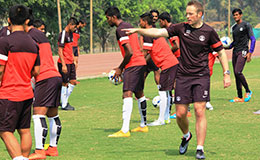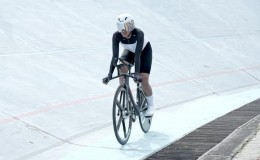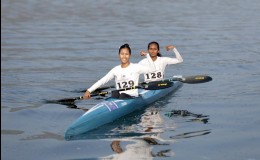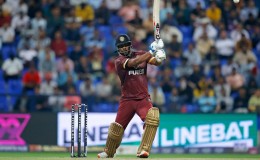 THIRUVANANTHAPURAM (TRIVANDRUM): Who was your Man of the Match in our last match (December 27 against Nepal), quizzed national coach Stephen Constantine.
THIRUVANANTHAPURAM (TRIVANDRUM): Who was your Man of the Match in our last match (December 27 against Nepal), quizzed national coach Stephen Constantine.
You mentioned a name -- the others also gave in their opinions. The coach listened.
Who was your Man of the Match? You quiz back.
“You should have a look at the numbers,” he said pointing at Sports Scientist Danny Deigan.
“I have a data of over 200 lines on the Team and each individual and how it relates to everything -- right from the risks of injury which they can suffer to their performances, the improvements and even the downward curve which is never encouraging,” he states.
“All these are variables which are the key to Stephen Constantine’s game plan,” he adds.
The intent is to achieve and match the world standards. That’s why the GPSs are here. It’s all about Sports Science.
“You have a look at the figures. Over stats collected from the last two editions of the World Cup to games involving top Club sides in La Liga, Bundesliga, the EPL and other Premier Leagues, a distance of 10-12 kms is to be covered by a Player depending on his position,” Deigan informs.
“A wing back as per world standards cover 10400 meters in a match; a central defender 9650 meters; a midfielder 11200 meters and a forward 10400 meters,” Deigan goes on.
Where are we placed?
“In the match against Iran in Bengaluru, where we used the GPS for the first time, our wing backs covered a distance of 9507 meters; Central defenders 9100 meters; midfielders 10872 meters and the forwards 10137 meters,” that’s what the GPS says.
“In our last match against Nepal in the SAFF Suzuki Cup, the Wing backs covered 10476 meters, central defenders 9435 meters; midfielders 11298 meters while the forwards 10600 meters,” Deigan points.
So are we almost there?
You understand its improving. But in some matches, you also need to understand it is strongly influenced by team tactics and the opposition, and can even be influenced by poor positioning of the player and the distance he needs to cover as a result of that.
“Not really,” Deigan insists. “You need to take into consideration the distances covered by a player as a high speed, over 14km per hour. That’s a big part of where we need to improve if we are to go forward.”
Do you have figures for that?
“Of course, As per the World standards, wing backs cover 2800 meters at high speed (ie over 14km per hour); Central Defenders 2000 meters; Midfielders 3050 meters and Forwards 2600 meters,” the stats are slapped on your face.
Where do we stand?
“In the match against Iran where we first used the GPS, our Wingbacks covered 1465 meters, Central Defenders 1117 meters; Midfielders 2272 meters while the Forwards 2098 meters,” Deigan pronounces.
“In our last match against Nepal, however, the figures have increased a bit. The wing backs covered 2020 meters; Central defenders 1196 meters; Midfielders 2407 meters and Forwards 2430 meters.”
How does a Player improve on that?
“The best way to improve is to work at high speed and the training has to be conducted at high intensity,” Deigan prescribes.
“The gap between Football at the domestic level and the International level is huge and for us the biggest challenge is to bridge
the gap. It can never be bridged within a span of 10 days. For that, it needs to begin at the Clubs.”
“It’s up to us to guide the players to understand, gauge and do that extra part to keep themselves going at the level if we are to attain World standards. Otherwise…” Deigan shrugs his shoulder.
You look at the figures provided (picture attached). “The figures in green denote the higher numbers while the figures in red tell us that those Players need extra work and that’s all part of our training and recovery Programme.”
You understand why Constantine asked one to check the figures. And as they say, figures never lie.
By Nilanjan Datta,
AIFF Media Team










